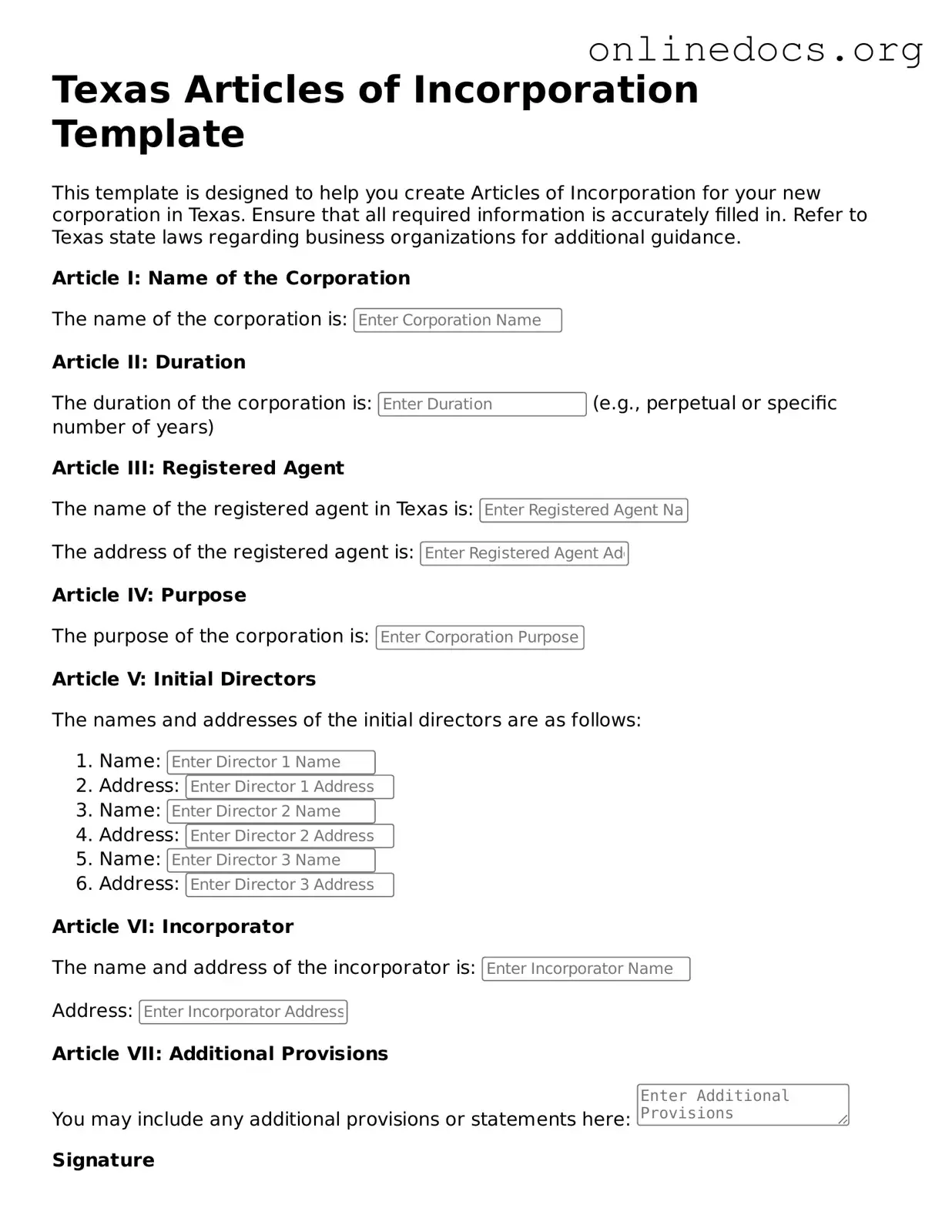The Texas Articles of Incorporation form is similar to the Certificate of Incorporation used in many other states. Both documents serve as the foundational paperwork for creating a corporation. They typically include essential information such as the corporation's name, purpose, and registered agent. While the specific requirements may vary by state, the overall function remains the same: to formally establish a corporation as a legal entity recognized by the state.
Another document that shares similarities is the Bylaws of a corporation. While the Articles of Incorporation outline the basic structure and purpose of the corporation, the Bylaws provide the rules and procedures for its internal management. Bylaws detail how meetings are conducted, how officers are elected, and other operational guidelines. Together, these documents create a framework for the corporation's governance.
The Operating Agreement is akin to the Bylaws but is used specifically for Limited Liability Companies (LLCs). This document outlines the management structure and operational procedures of the LLC. Like Bylaws, it defines the roles of members and managers, as well as how profits and losses will be distributed. Both documents are crucial for ensuring clarity and order within the organization.
Incorporation documents are also similar to the Partnership Agreement, which is used when two or more individuals decide to run a business together as partners. This agreement lays out the terms of the partnership, including each partner's contributions, profit-sharing arrangements, and decision-making processes. While the structure differs, the purpose of establishing clear guidelines for operation is consistent.
If you're eager to start your career journey at Chick Fil A, it's essential to prepare the necessary documentation, such as the Chick Fil A Job Application form, which can be found at https://fillpdf-forms.com/. This form is designed to streamline the hiring process, ensuring that all relevant personal details and availability are thoroughly captured for review.
The Certificate of Good Standing is another document that relates to the Articles of Incorporation. This certificate is issued by the state to confirm that a corporation is legally registered and compliant with state regulations. It serves as proof that the corporation exists and is authorized to conduct business. Although it is not a founding document, it is essential for maintaining the corporation's legal status.
Similar to these documents is the Statement of Information, often required in various states. This document provides updated information about the corporation, including its address, officers, and registered agent. It ensures that the state has current records, which is vital for legal and administrative purposes. Keeping this information up to date helps maintain good standing with the state.
Lastly, the IRS Form SS-4, which is used to apply for an Employer Identification Number (EIN), is another important document. While not a state-level incorporation document, obtaining an EIN is crucial for tax purposes and for opening a business bank account. This form is necessary for corporations and other business entities, linking them to federal tax obligations.
